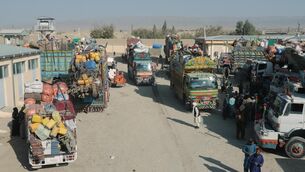Low turnout predicted in landmark Afghan elections
As heavily guarded convoys hauled ballots from landmark legislative elections across Afghanistan’s rugged terrain today, evidence that turnout was sharply lower than in last year’s presidential vote undermined celebrations of the polling as a key step toward stability.
Afghan and international officials hailed yesterday’s elections as a major success, but chief electoral officer Peter Erben said turnout appeared to be just over 50 percent, based on reports from about one-third of the polling stations.














